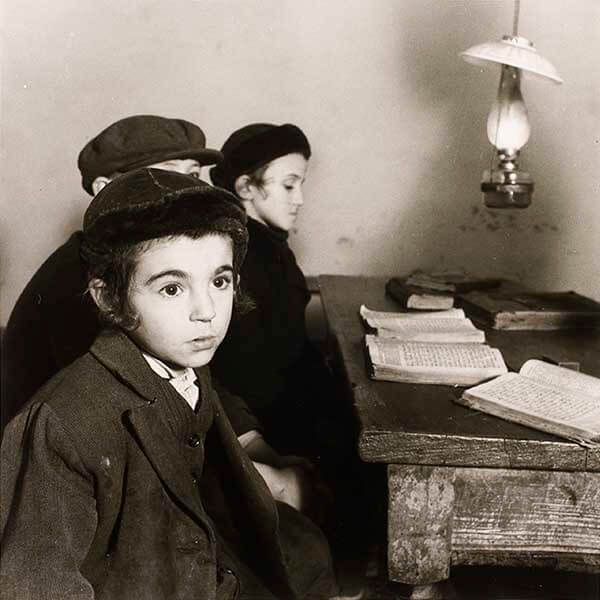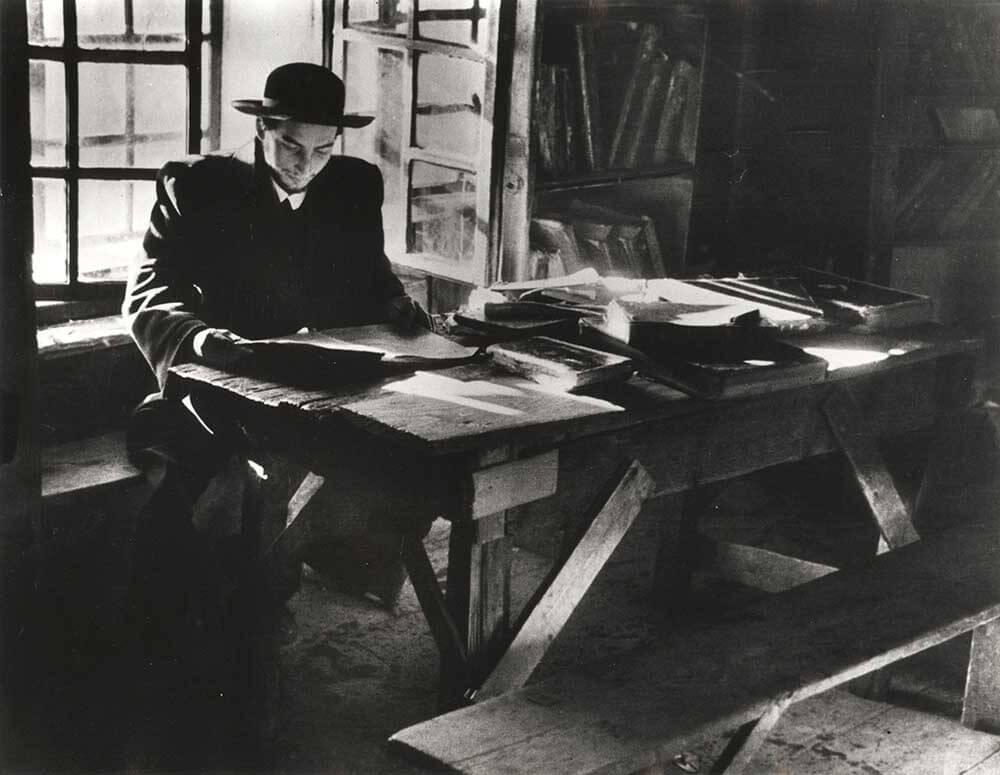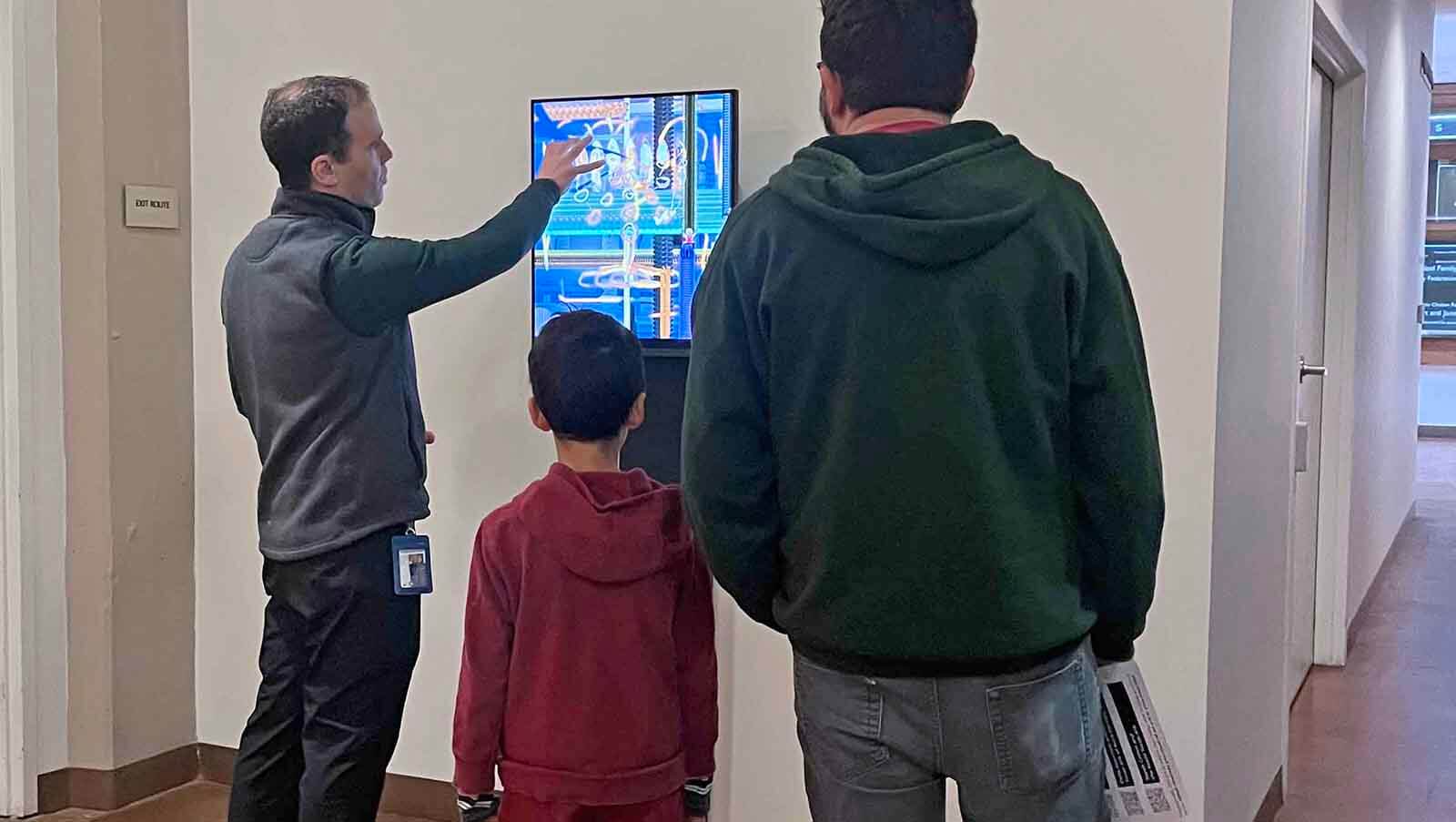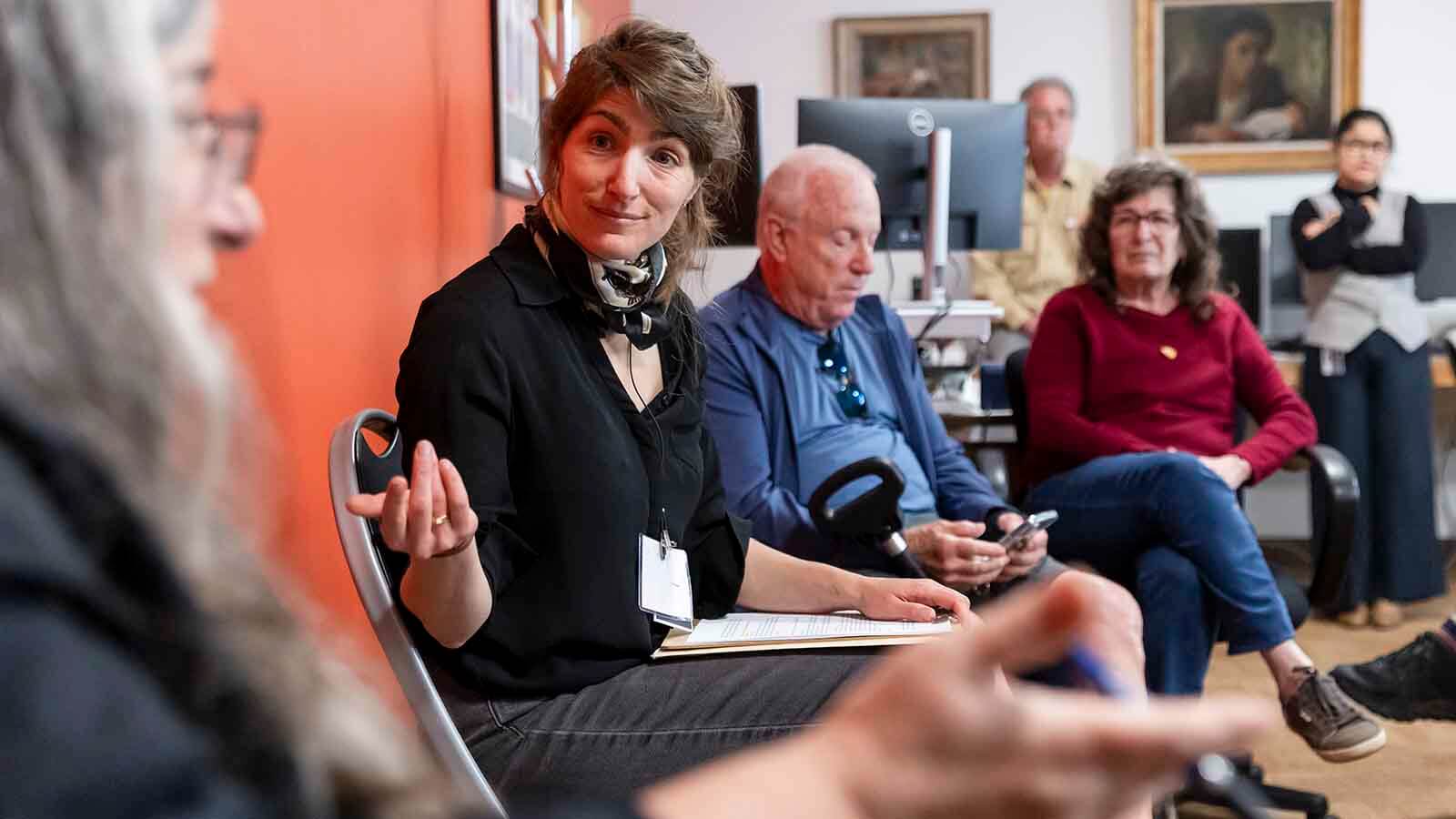News
Shaping Our Memory: Images from the Roman Vishniac Archive
December 7, 2021
“I was living in Germany in the thirties, and I knew that Hitler had made it his mission to exterminate all Jews, especially the children and the women who could bear children in the future. I was unable to save my people, only their memory.”

The portrait of David Eckstein, one of Vishniac’s most iconic photographs. Vishniac recalled the moment he took the photograph, saying, “I watched this little boy for almost an hour, and in this moment I saw the whole sadness of the world.”
Photograph [2016-6-17]: [David Eckstein, seven years old, and classmates in cheder (Jewish elementary school), Brod, (Carpathian Ruthenia/Czechoslovakia)], ca. 1938, Roman Vishniac. The Magnes Collection of Jewish Art and Life. Gift of Mara Vishniac Kohn.
The Magnes Collection is home to the Roman Vishniac Archive encompassing the beginnings of modern photography and glass negatives of the late 1920s and 30s through the sophisticated and artful portraits of notable American Jews in the 1950s.
The Roman Vishniac Archive is Jewish history, American history, and world history captured in vivid images that punctuate our imagination and shape our memory.
In 1942, Roman Vishniac took this iconic portrait of Albert Einstein (1879-1955) in his office at Princeton University.
Photograph [2016-6-10]: [Albert Einstein in his office, Princeton University, New Jersey], 1942, Roman Vishniac. The Magnes Collection of Jewish Art and Life. Gift of Mara Vishniac Kohn.

A gift to The Magnes by Vishniac’s daughter, Mara Vishniac Kohn, the Roman Vishniac Archive comprises over 30,000 images, including prints, negatives, and slides, along with essential primary documents about Roman Vishniac’s life and work.

In 1947, on assignment for the Jewish Daily Forward, Roman Vishniac returned to Berlin, which had been his hometown for two decades before World War II, and photographed its ruins and devastated urban landscapes in striking detail.
Photograph [2016-6-15]: [Woman walking on crutches through ruins, Berlin], 1947, Roman Vishniac. The Magnes Collection of Jewish Art and Life. Gift of Mara Vishniac Kohn.
As of December, 2021, The Magnes has received generous donations from Taube Philanthropies, Libitzky Family Foundation, Barbara and Sheldon Rothblatt, Frederick J. Isaac Philanthropic Fund, and Richard Nagler, along with from a widespread network of Friends of The Magnes, in order to launch a comprehensive five-year project to make the collection digitally accessible to scholars, students, and the public.
The Magnes Collection is currently processing the Roman Vishniac Archive. Materials from the archive are not yet available.
More Info
External Links:
About: Roman Vishniac Archive
Exhibition: An Archive of Archives: Roman Visniac’s Exhibition History | New York, 1971-72
Flickr Album: Roman Vishniac Photographic Prints (2017)
Berkeley News Article: Vanished no more: Giant of photography Roman Vishniac finds a home at The Magnes
Latest News
Keep Up-To-Date





